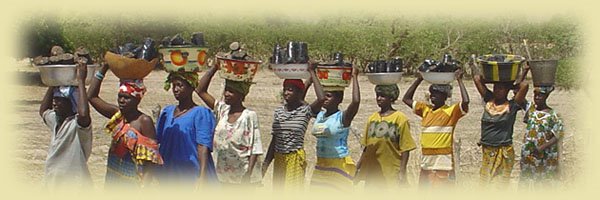The Malian Context
 The following text is quoted directly from the Mali Folkecenter website but I thought summed it up rather well:
The following text is quoted directly from the Mali Folkecenter website but I thought summed it up rather well:
Geography
Mali is a vast landlocked republic located in West Africa. It is located in the heart of the Sahel, a region threatened by drought and desertification. It lies between Mauritania to its west and Niger to its east. The northern 65% of its land area is desert or semi-desert, and the vast majority of the population are directly dependent on their environment (herding, farming or fishing) for their livelihoods. The capital city is Bamako. Other major towns are Sikasso, Segou, Mopti, Timbuktu, Gao and Kayes. There are 8 administrative divisions or regions (see figure 1 below):, Kayes, , Koulikoro, Sikasso, Segou, Mopti, Tombouctou, Gao and Kidal. The country is further subdivided into 703 rural communes (communes). Its population, growing at a high annual rate of 3 percent, is approximately 12 million people. The national territory extends over 1 241 000 km2.
StatisticsMali’s Human Development Index ranking is 164 out of a total of 173 countries. It has a population of 12 million, over 70% of whom live below the poverty line of $1 a day. Life expectancy at birth is 51.5 years. Infant mortality is 142 (per 1,000 live births). The adult literacy rate is 41.5% (48.9% for men, 34.4% for women), and the average number of children born per woman is 7. HIV/AIDS exposure is increasing. (Statistics: UNDP Human Development Report 2002).
The population is mostly made up of subsistence farmers living in villages of 500-2000 people. Around 15-30 villages make up one commune, 20-50 communes make up a district, and around 4-7 districts make a region. There are 8 regions in Mali. Farmers rely on agriculture for their livelihoods, growing cereals for food and often cotton as a cash crop for export. In rural areas 80% of energy needs are met by firewood and charcoal, and people use kerosene lamps and torches for lighting. This does not include, of course, animal and manpower, which is tiring and time consuming. Rechargeable car batteries are also used for lighting, TV and radio, and a very small minority of people have solar panels or a generator. In rural areas, modern energy services, particularly productive (i.e. income generating) uses are very limited, making efforts to stimulate local economic development difficult.
Energy situation in Mali
Supply possibilities
Mali has no fossil energy resources, meaning that fossil fuels must be imported from the coast at considerable cost. This means that generating costs for grid electricity are generally around twice as high as Cote d’Ivoire for example, but Mali is significantly poorer as a country. Much of Mali’s hard earned foreign currency is lost on fossil fuel imports, as there is heavy dependence on imported petroleum products that represents about 8 % of the national energy balance, weighing heavily on the foreign exchange and trade balance of the country (more than 100 million USD in 2000, and 75 million USD in 1998). However, in terms of Renewable Energy Sources, Mali is rich in solar, hydro, biomass and, in some parts of the country, wind. There are few places on earth with a better solar resource, with 5-6 standard sun hours per day.
Decentralisation
Rural Exodus – draining communities of young talent
In rural areas 90% of the population are engaged in farming, which takes up nearly all of people’s time for 5-6 months of the year. But during the 6-7 month dry season, young people, feeling that opportunity is lacking in the villages, move to the cities to find work. Every year, some of them stay on to live there. This rural depopulation is increasing every year, and besides reducing the human resource base of the villages, with an important and dynamic section of the community leaving, it contributes to overcrowding, crime, delinquency, drug problems, prostitution and AIDS in Malian cities, particularly Bamako. It is more cost effective to prevent this rural exodus than to try to treat its symptoms: the integration of these young people into the cities is more difficult and expensive than the improvement of their living conditions in rural areas. The rural exodus is a real danger today, not only for these villages but for the whole country, threatening the government's decentralisation policy.
For example, the infant mortality rate is extremely high, at 123 deaths per 1,000 live births (2000 est., UN HDI) Life expectancy at birth for the total population is barely 47 years. The total fertility rate is almost seven children born/woman (2000 est.). Many of these children never reach their fifth birthday. It is clear that there is a profound need for substantially improved health services in Mali, and electrification of rural health centres can contribute substantially to overall improvement in life expectancy and infant mortality rates.
Literacy, defined as the percentage of the population age 15 and over that can read and write, is only 31% for the total population. It is 39.4% for men and only 23.1% (1995 est., UN HDI) for women. Substantial increases in the levels of social and economic development will require greater and more extensive education, as well as dramatic improvements in health, from the prenatal period through adult life. Electrification of schools to allow evening education will be an essential dimension of improved education for the entire population as the adults, especially women, are very occupied in the day time, so at the evening it is more easy to get to school if there is lighting there.
Blogged with Flock


No comments:
Post a Comment